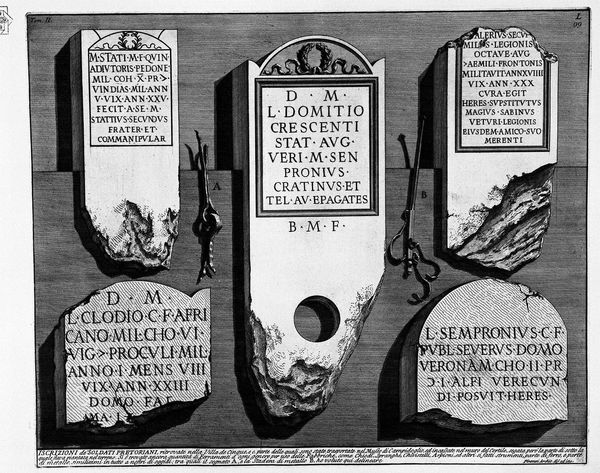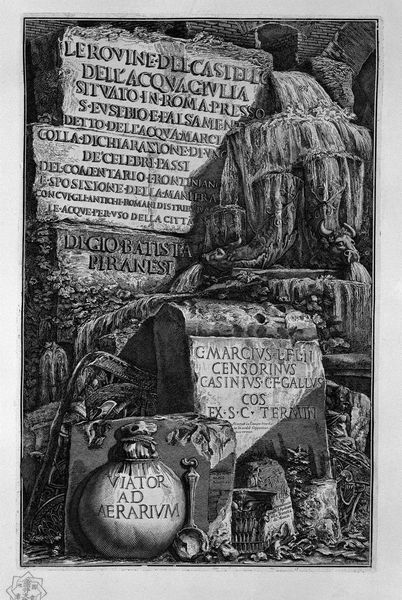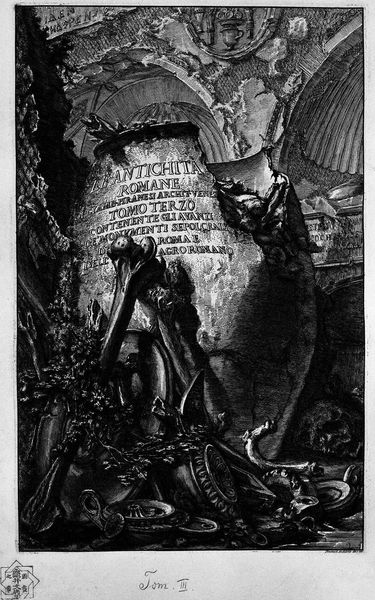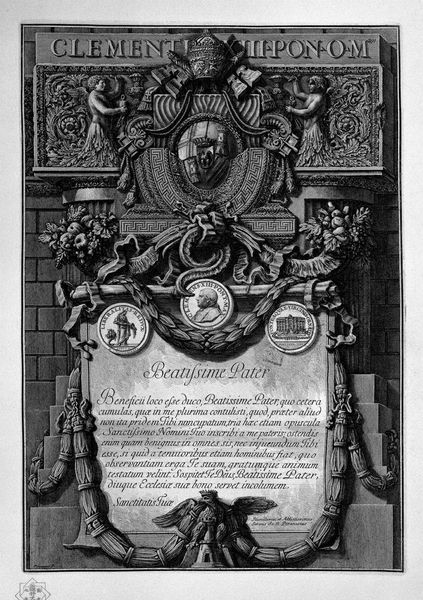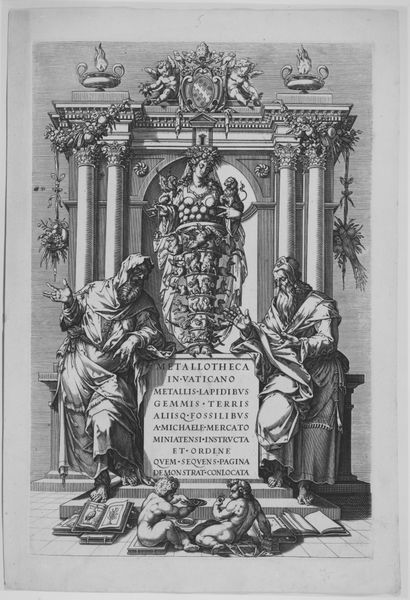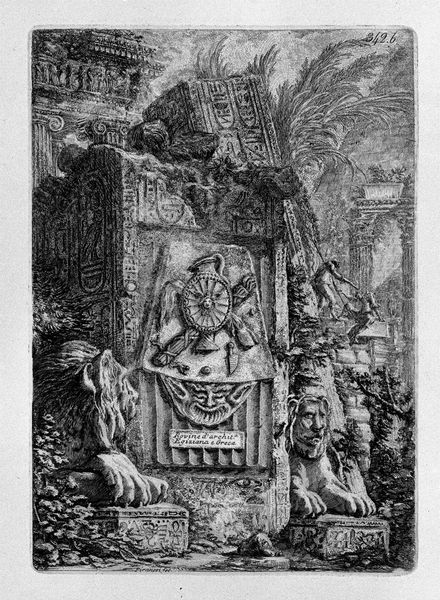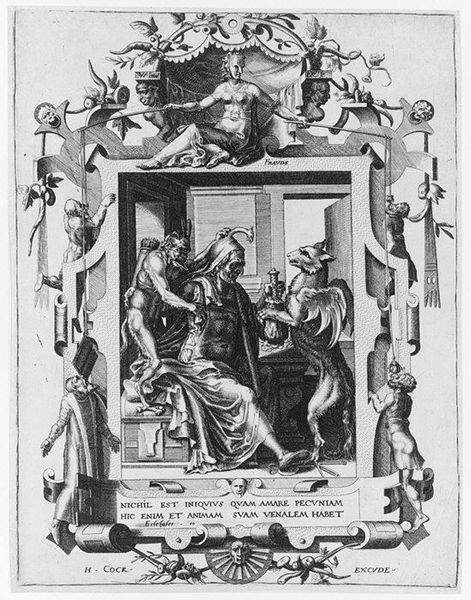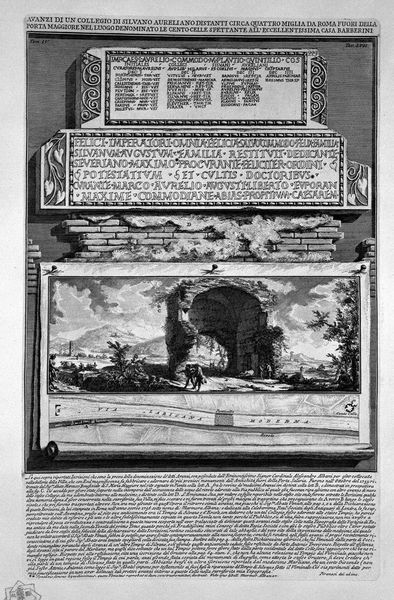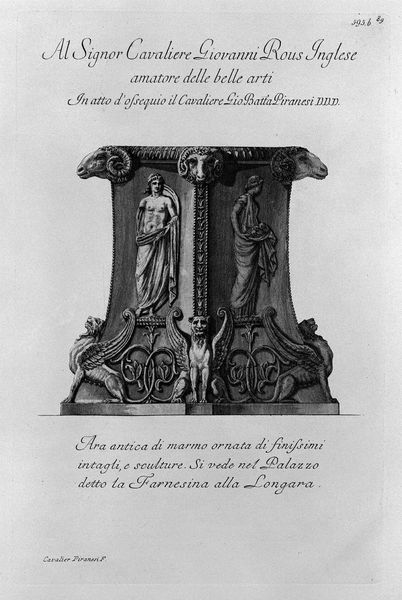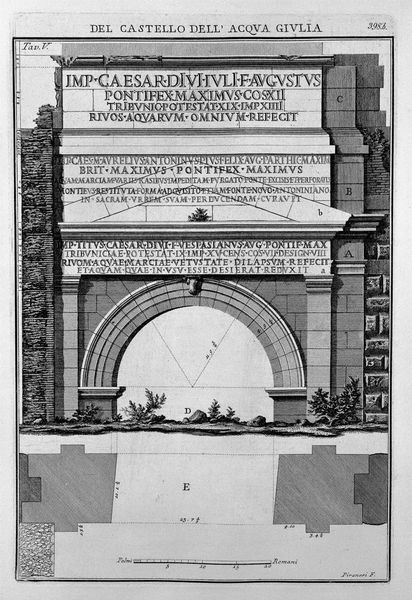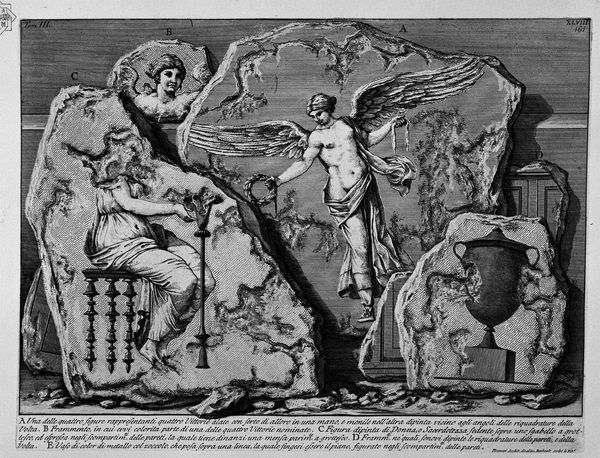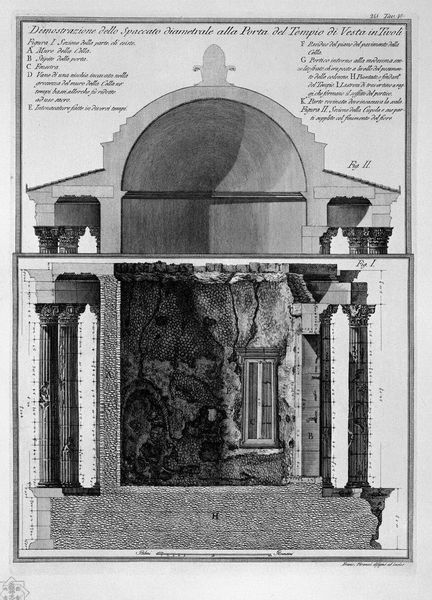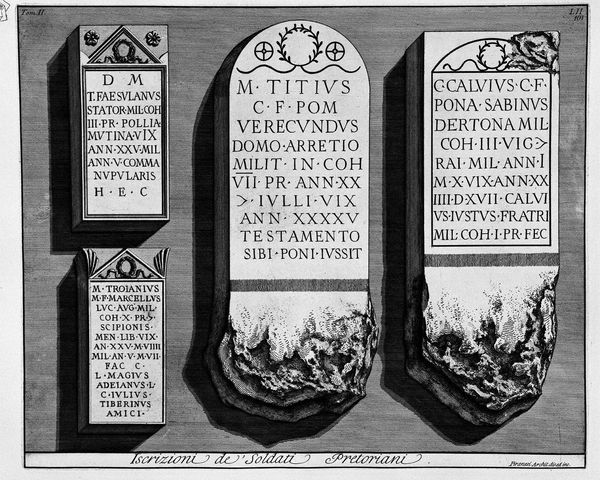
The Roman antiquities, t. 3, Plate XLIII. Nuts, fragments of sculpture, columns, capitals found in excavations around the pyramid of Caius Cestius.
0:00
0:00
drawing, print, etching, engraving, architecture
#
drawing
# print
#
etching
#
romanesque
#
column
#
history-painting
#
engraving
#
architecture
Copyright: Public domain
Curator: Welcome to this fascinating print, "The Roman Antiquities," specifically plate XLIII from volume 3. It's an etching and engraving by Giovanni Battista Piranesi, depicting ancient Roman fragments unearthed around the Pyramid of Cestius. Editor: It strikes me as quite bleak, almost romantic in its portrayal of ruin. The stark black and white rendering emphasizes the fragmented forms; look at the crumbling sculpture and the overgrown vegetation encroaching upon these remnants. Curator: Indeed. Piranesi masterfully uses chiaroscuro to dramatize the scene. Notice how the interplay of light and shadow defines the architectural elements. Consider the Doric column to the left and the partial view of the Pyramid in the distance. Editor: And then you've got those fractured artifacts in the foreground—fragments of statues strewn across broken blocks. The textures in the rendering are superb. He’s carefully cataloging materials through his precise linework, from weathered stone to organic matter. Curator: Exactly. It is not just a documentation, but also a reconstruction. Piranesi wasn't merely copying what he saw; he was interpreting and, in a way, completing the image of Rome's grandeur, even within the decay. Editor: One almost feels like these elements were placed specifically for the image, composing a meditation on Rome's layers: its structure, its purpose, the labor and the way they endure beyond those intended applications. Even in bits and pieces, their intrinsic artistry and historical worth are legible. Curator: Precisely. He layers semiotic information too, embedding cultural and temporal meanings through careful composition. It's a calculated layering, meant to evoke more than to simply represent. Editor: Piranesi has prompted thoughts about not just the skill involved in Rome's original construction, but also his craft in revealing its secrets. Curator: It truly offers a multi-layered exploration of form, history, and artistic interpretation. Editor: An excellent observation that connects materials to their symbolic meaning.
Comments
No comments
Be the first to comment and join the conversation on the ultimate creative platform.
